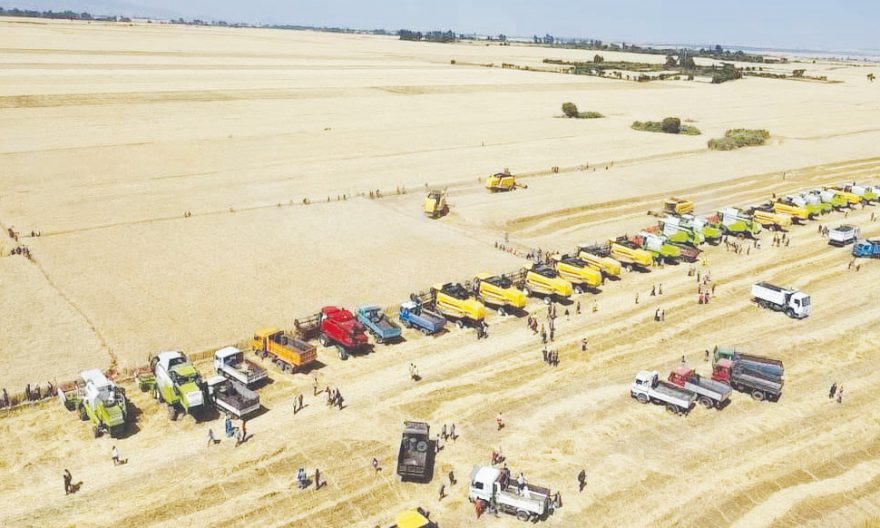
BY DARGIE KAHSAY
In Ethiopia it is a Mehere season, a season which comes after a rainy one Kiremt (winter). Kiremt, a time when a heavy rain hits, is a crop production season across Ethiopia. During the Mehere season, farmers and crop-producers are busy in harvesting the crops. It is a really a busy time for Ethiopian farmers. They work day and night to collect and harvest the crop every farmer has produced. Avery tough task awaits especially a small-sized family.
The traditional way of sowing, weeding, thrashing, winnowing and all together harvesting crops consumes huge energy. It also demands huge manpower. This continues for months. During this season farmers are forced to waste unnecessary energy since they work day-and-night. In addition to wastage of unnecessary energy and labor intensive task, the traditional way of harvesting is exposed to huge post-harvest loss of crops in Ethiopia.
According to studies, annual average post-harvest losses of crops in Ethiopia are around 25 percent. This shows that around a quarter of the produced grain is lost during harvesting, which can affect the productivity of households and even the national agricultural productivity as well. Hence, the post-harvest crop loss has its own implications in ensuring food and nutrition security especially in the small-holder households.
But, following government’s push to modernize the agriculture sector by investing in wheat production both in the rainy season and otherwise, and by expanding irrigation during the summer season, Ethiopia is extensively introducing modern farming as well as harvesting vehicles, that handle tasks ranging from rendering the soil comfy to harvesting. Ethiopia has distributed multipurpose tractors and combiner harvesters as part of its agricultural transformation journey.
The above shots were taken in Bale Zone of Oromia State this week. The farming vehicles are seen in the agricultural field covered by wheat ripe for harvesting. As part of its wheat self-sufficiency initiative with local production, during the past three years, Ethiopia is highly applying cluster farming, which is crucial both for maximizing productivity and suitable for modern harvesting.
The farming vehicles above are harvesting wheat produced by cluster farming in Bale Zone, which is one among agricultural productive areas in Ethiopia. The whole crop in the field is ready and waiting for harvesting. The vehicles are in full gear to start the wheat produced by cluster farming. This trend shows the oxen-driven and scattered crop harvesting has timed-out. Due to the modern way of harvesting, there are no farmers seen in respective field to collect and harvest their own ripe crop. This is a new trend for Ethiopian agriculture.
Ethiopia plans to export wheat to its neighbors starting from 2023. This comes following the introduction of modern agricultural farming techniques. The modern agriculture gives due attention to help the small holder farmers in addition to promoting mechanized agriculture. The modern harvesting would support effectuating the country’s vision of food self-sufficiency and realizing its vision of exporting wheat, in addition to helping smallholder farmers to save energy and time as well as ward off post-harvest crop wastages. Expanding the modern farming techniques throughout the country would transform Ethiopia’s agriculture and the government should continue its efforts in this regard.
THE ETHIOPIAN HERALD SUNDAY EDITION 25 DECEMBER 2022





